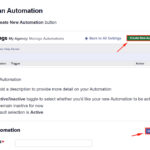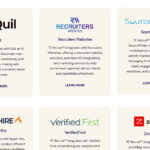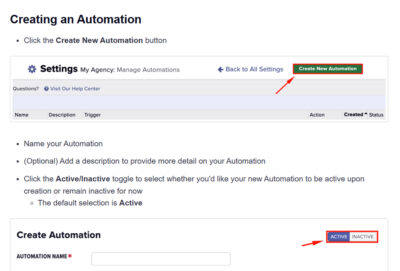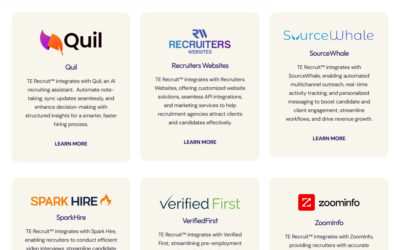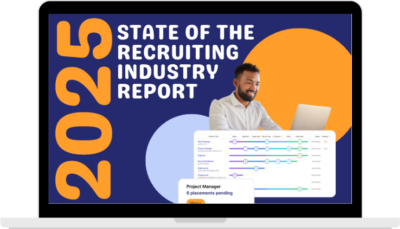(Editor’s note: The information from this article by Top Echelon Recruiting Software has been taken from an Expert Recruiter Coaching Series webinar by Bob Marshall of TBMG International titled, “Using the Concept of Inverted Cones to Make More Placements.” Click HERE to watch the video of that training webinar for free.)
Recruiting is a dynamic, ever-evolving field where success hinges on adaptability, knowledge, and energy. For over 43 years, Bob Marshall of TBMG International has studied and coached recruiters to become big billers. One of his most powerful and enduring strategies is the Concept of Inverted Cones. This classic approach offers a flexible framework for recruiters at any level to optimize their desk, find viable markets, and thrive in both boom times and recessions.
“This is another of the classic techniques I’ve learned and adapted from the big billers I’ve met and known over my now 43-year recruitment career,” says Marshall.
Let’s break down this concept in depth and explore how it can help recruiters make more placements consistently.
Energy vs. Knowledge: The Starting Point
At the beginning of a recruiter’s career, energy is high—but knowledge is low. As time progresses, energy tends to decline while knowledge increases. This natural shift can become dangerous if not managed strategically.
“When we hire new recruiters, they almost always start with high energy and low knowledge. Then, as they learn the job and the market, their knowledge increases, but their energy can drop below the midpoint. That’s a critical crossroads.”
Marshall presents a graph to visualize this dynamic: energy on the vertical axis, knowledge on the horizontal. At the point where the lines cross, many recruiters stagnate. They’ve acquired the knowledge but no longer have the energy to leverage it effectively.
The solution? A system that maintains high energy and builds knowledge: the Inverted Cone strategy.
What Are the Inverted Cones?
Visualize two cones or funnels, laid on their sides and superimposed over each other. The first cone—the Specialty Cone—has its wide end to the left and narrows to the right. This represents the evolution of your niche or specialization over time.
The second cone—the Market Area Cone—is flipped. It starts narrow and widens over time, representing the geographical scope of your market.
“With rookie recruiters, we like to start them in a general or wide area specialty. The wide part of the cone would be their specialty—although it’s more of a generalist start that eventually narrows into a true specialty.”
By working your way down the Specialty Cone, you become more focused. Simultaneously, you broaden your reach geographically, gaining a deeper, more powerful presence in your niche.
From Generalist to Power Broker
Let’s take a real-world example to show how this model works over time. Suppose a rookie recruiter starts in a general technical discipline like engineering, focused only on the San Francisco Bay Area.
In the first three months, they call into every tech company in that market, getting a feel for the landscape. They identify which roles are in demand and which clients are hiring.
After 4 to 9 months, they may decide to focus solely on electrical engineers, expanding their market to California, Oregon, and Washington. They’ve narrowed their specialty while widening their geographic scope.
By the 10–18-month mark, they’re only targeting electrical engineers with microprocessor experience in the western United States.
Eventually, they reach the Power Broker stage, placing electrical engineers with microprocessor backgrounds in robotics—a highly niche market—across the entire United States or even globally.
“The companies that they deal with and the candidates with that expertise will know them in that marketplace. They truly are power brokers,” says Marshall.
Understanding the Flux
But here’s the catch—the cones are a flux situation. Markets shift. Niches dry up. Industries collapse.
Marshall vividly remembers the oil and gas bust in the 1980s. Many recruiters who specialized in that sector had become power brokers. When the industry collapsed, they had no backup plan.
“They had never been taught the basics by entering the cone at the wide end, working a lot of areas, and developing themselves and their desks. When their specialty dried up, they had nowhere to go.”
The key lesson: know how to back out of the cone. Retreat to a broader specialty and narrower geography when necessary. Re-enter the cone through another viable path.
“Don’t just work harder in an insolvent marketplace. All you do is beat yourself up. Instead, back out of the cone.”
The Four Obstacles to Placements
If you’re not getting sendouts or placements, Marshall says it usually comes down to one of four issues:
- Bad Candidate – They’re unplaceable or damage your credibility.
- Bad Presentation – You’re not positioning your candidate properly.
- Bad Marketplace – Your niche has dried up.
- Poor Rapport Building – Hiring managers don’t trust or like you.
“If you’re okay on #1, #2, and #4, then it might be wise to look at #3. Reintroduce yourself to the inverted cone concept. Are you in a flux situation?”
Eight Tools for Working Inside the Cone
Marshall shares eight proven tools recruiters can use while navigating the cones:
- MPC (Most Placeable Candidate) – Must have a marketable skill, realistic expectations, reference-checked, availability, and mutual respect.
- FAB (Feature-Accomplishment-Benefit) Presentations – Teach your candidates to use FAB language to sell themselves in interviews.
- Inclusion vs. Exclusion – Start by saying “yes” to a wide range of opportunities, and narrow your focus later.
- “I Have Arranged” Close – After a strong presentation, say: “I have arranged for this candidate to be available next Monday or Tuesday. Would you like to speak with them?”
- Attrition vs. Expansion – Prioritize job orders replacing lost employees. These have higher urgency than new roles due to growth.
- Lost Sale Close – When a client passes on a candidate, ask: “What kind of candidate would you like to hear about in the future?”
- Candidate Interview Closes – Train candidates to ask: “Can we conclude our business today if everything goes well?” and “What can I do on day one to relieve your immediate workload?”
- Multiple of Compensation Close – Demonstrate value by showing that a $100K salary position generates $500K+ in business value. Your $30K fee is just 6% of that value.
“We are definitely a bargain when you explain it that way. And remember, your client benefits from the employee year after year—we only get paid once.”
Big Biller Checklist: Strategic and Tactical Success
Marshall concludes his presentation with a dual-layered checklist: 5 Strategic Essentials and 10 Tactical Necessities.
Strategic Essentials
- Attitude – Relentless persistence and a winning mindset.
- Focus – Clear goals and execution.
- Control – Manage every stage of the process.
- Discipline – Respect your systems and routines.
- Relationships – Prioritize people over fees.
Tactical Necessities
- Know the endgame – Only pursue winnable opportunities.
- Sell benefits – Facts tell, but benefits sell.
- Solve problems – Position yourself as the solution.
- Contact matters – Recruiting is a contact sport.
- Plan and execute – Work closest to the money.
- Avoid unwinnable games – Don’t waste time.
- Control time – Time kills all deals.
- Live recruiting – It’s a lifestyle, not just a job.
- Golden rule – Treat others how you want to be treated.
- Secure the deal – It’s not over until the check clears.
“Every single qualification for success is acquired through habit,” says Marshall. “If you don’t deliberately form good habits, you will unconsciously form bad ones.”
Systems Over Goals: Fix the Inputs
In closing, Marshall stresses the importance of systems over goals. Don’t just set an income target—build the daily habits that create consistent performance.
“If setting a goal was enough to achieve it, every Olympian would win gold. The difference between success and failure isn’t the goal—it’s the process.”
By starting at the wide end of the cone, refining your specialty over time, listening to the market, and staying adaptable, you create a career built on knowledge, energy, and resilience.
Final Words: Listen, Learn, and Adapt
If you find yourself in a rut—what Marshall calls a “personal recession”—don’t blame the marketplace. Analyze where you are in the cone. Are you stuck in a dying niche? Are you trying to outwork a bad market?
“Don’t become a power broker on day one. If that area dries up, you’ll have no foundation to fall back on.”
Start wide. Learn your market. Let the data guide you. And when the time comes, don’t be afraid to back out and start again.
That’s how top recruiters make more placements—and stay on top.



